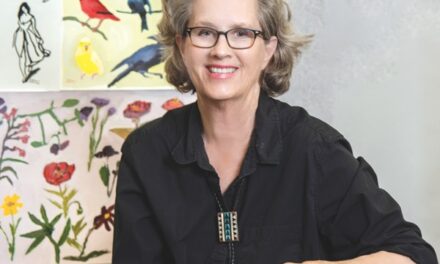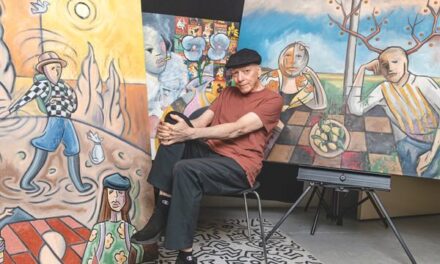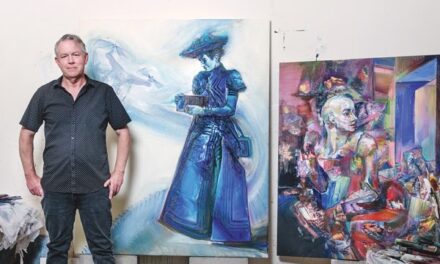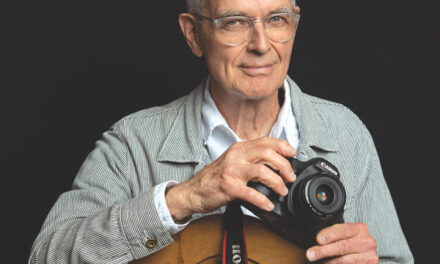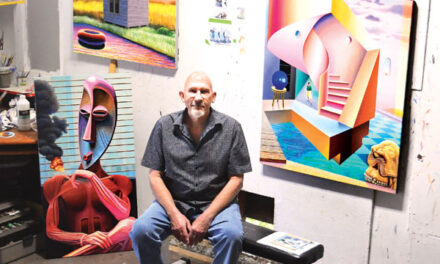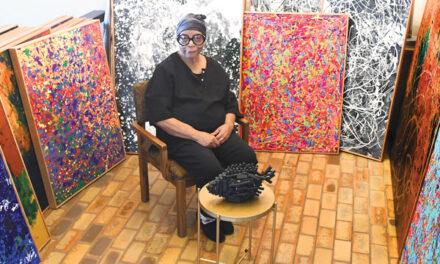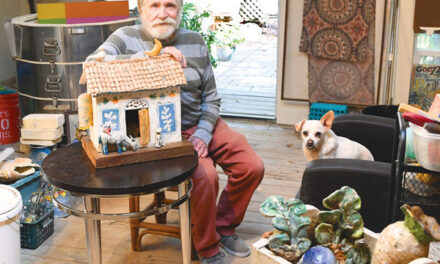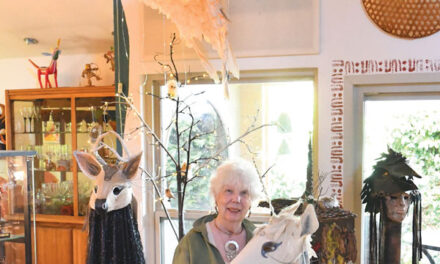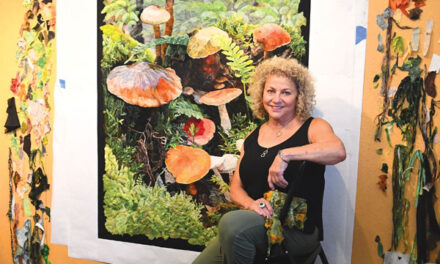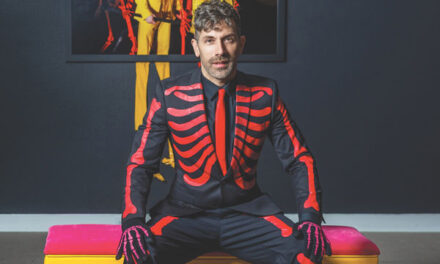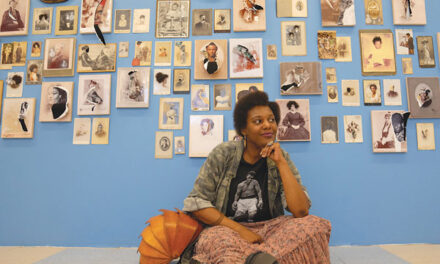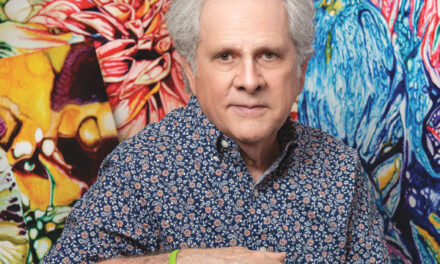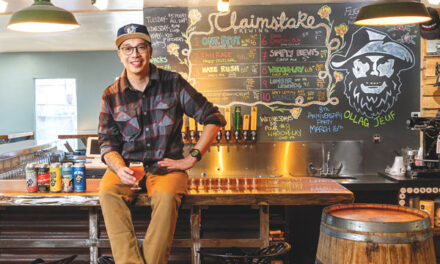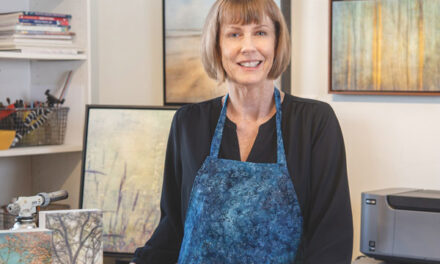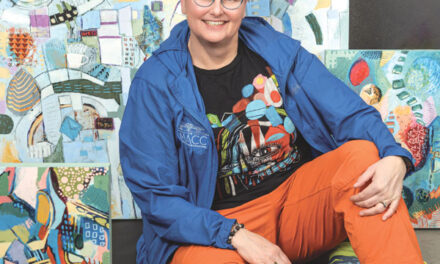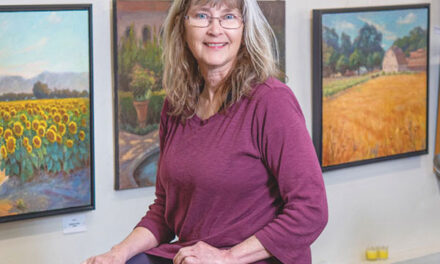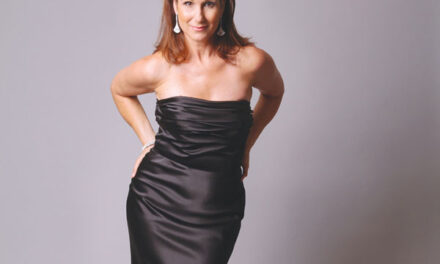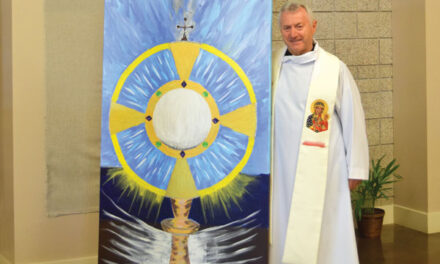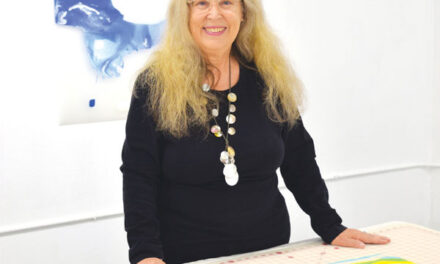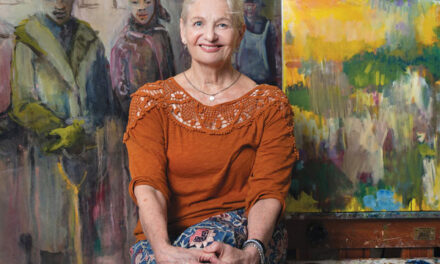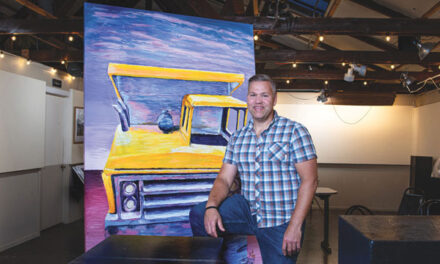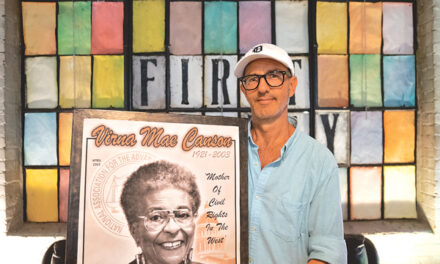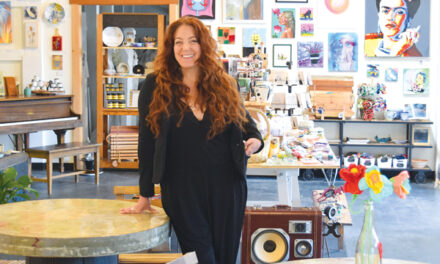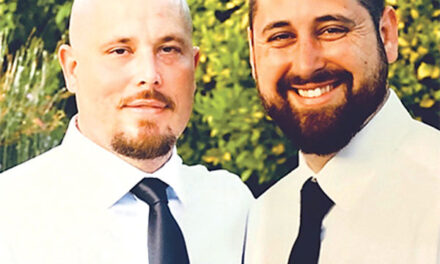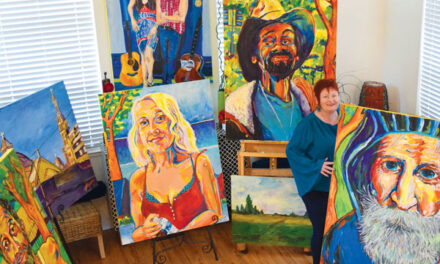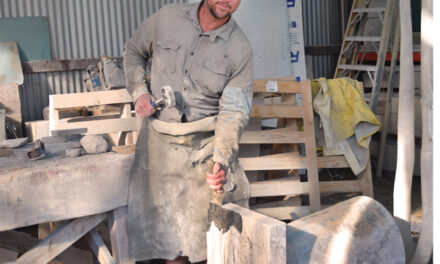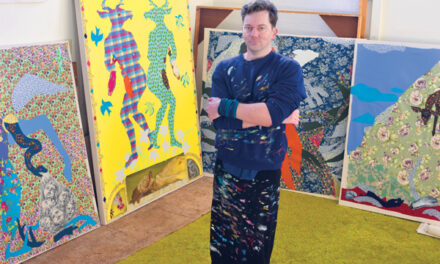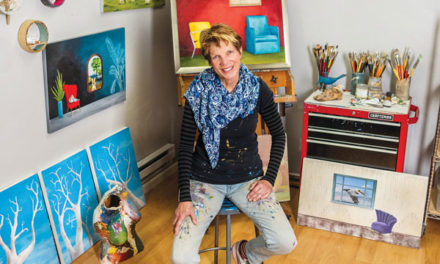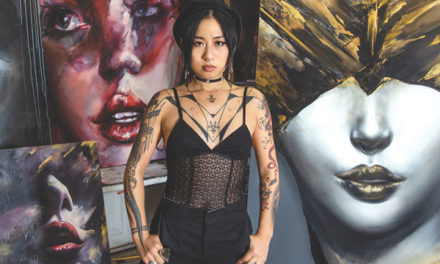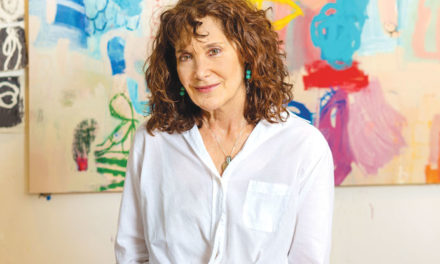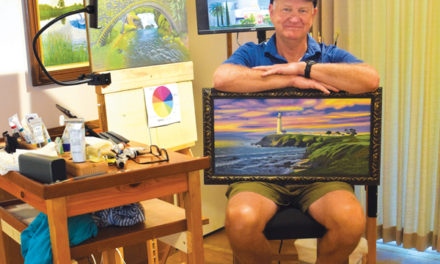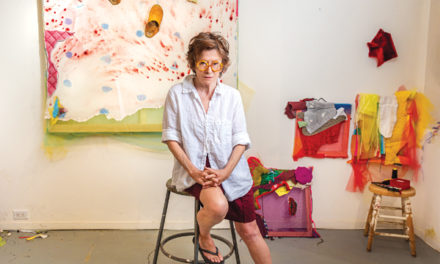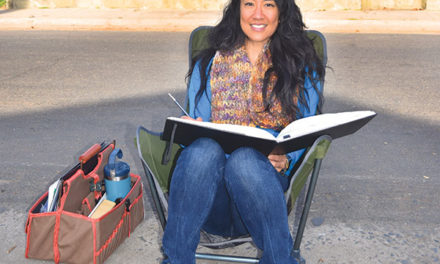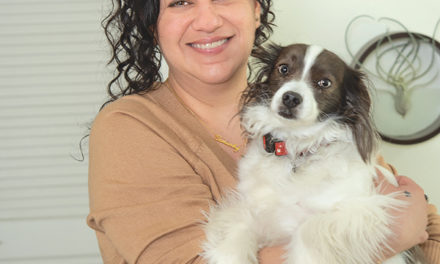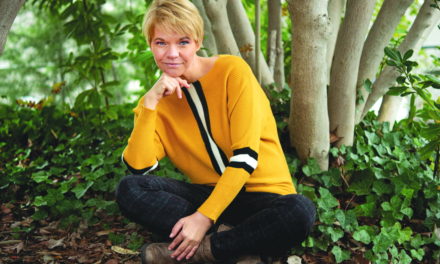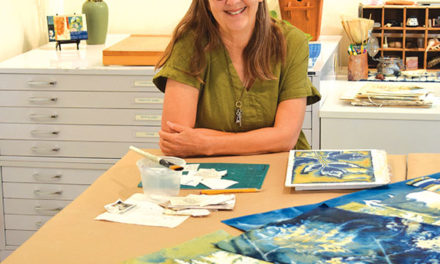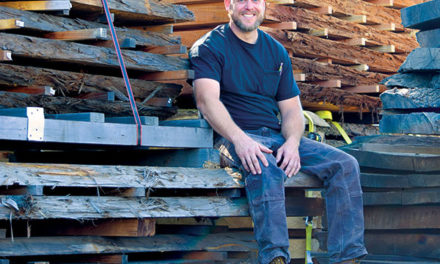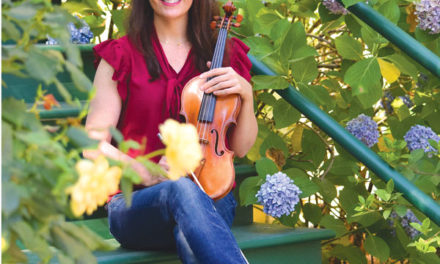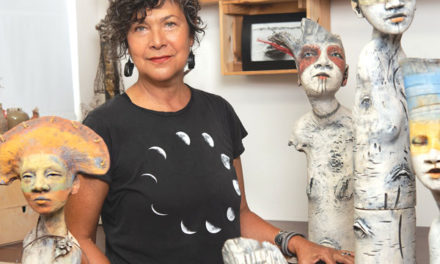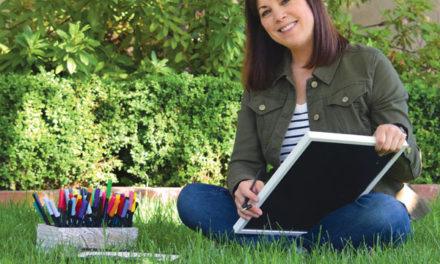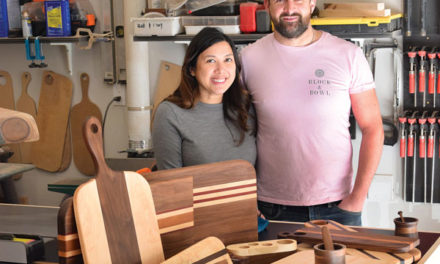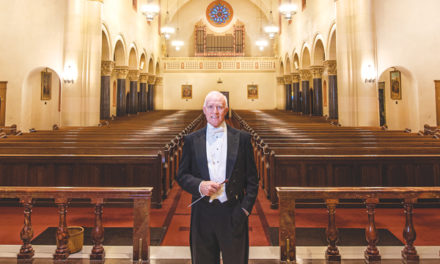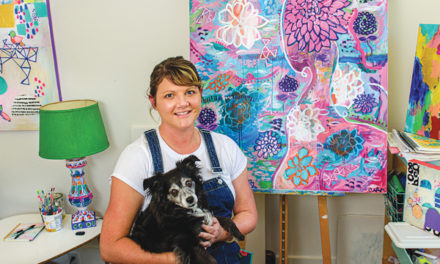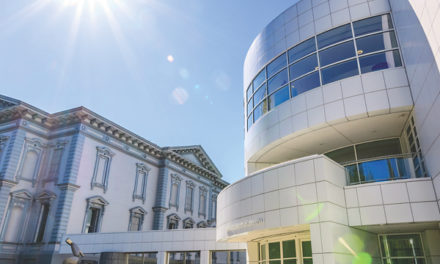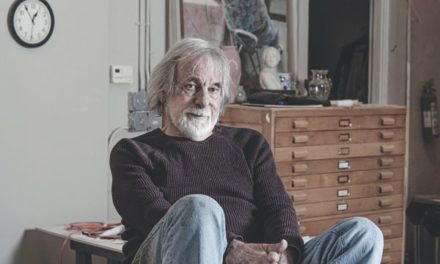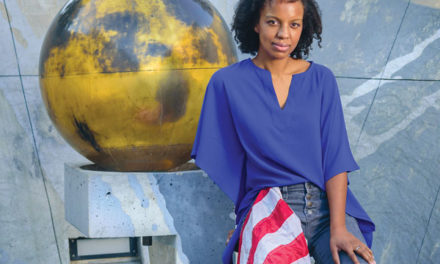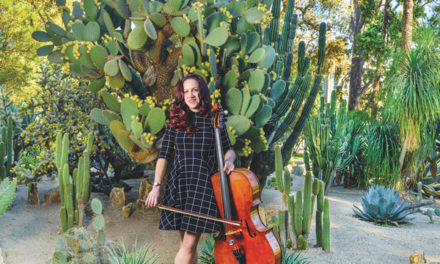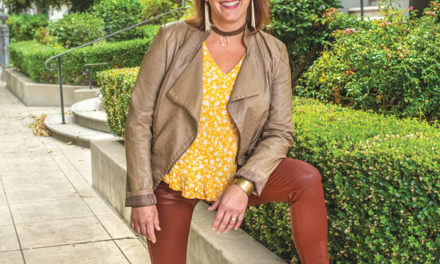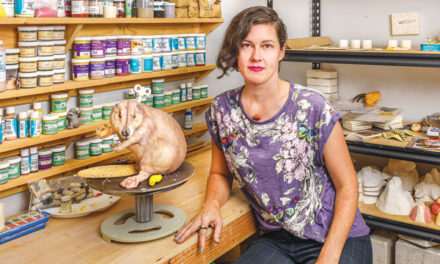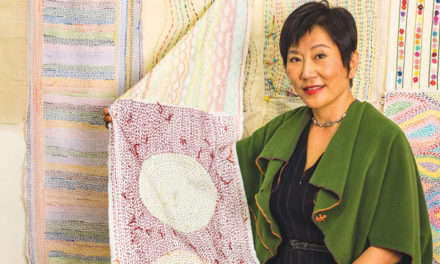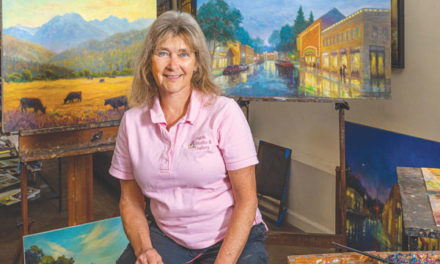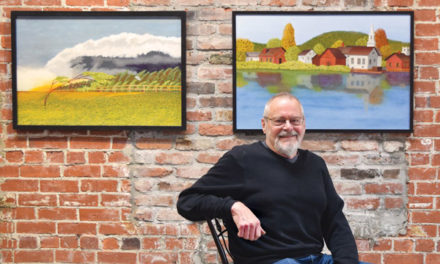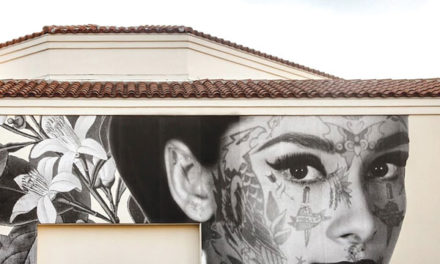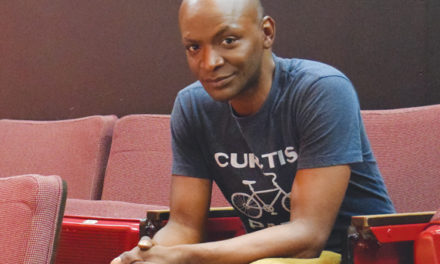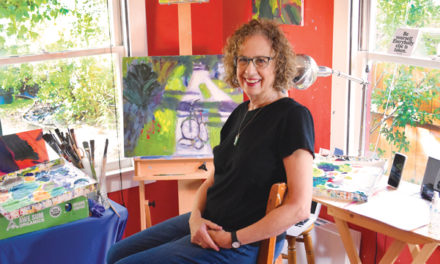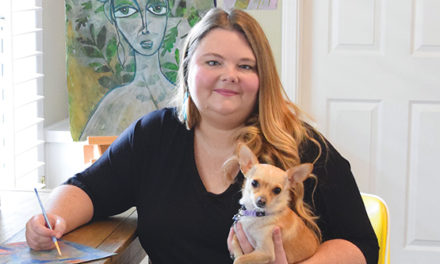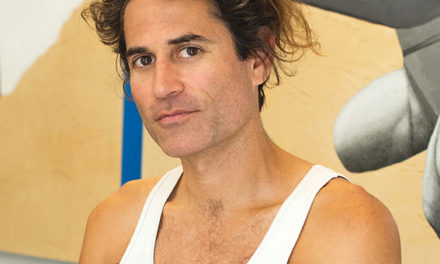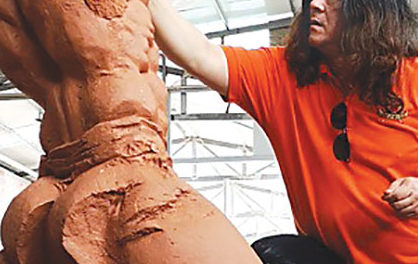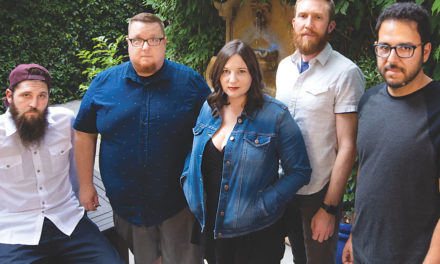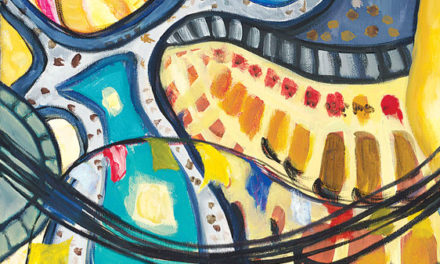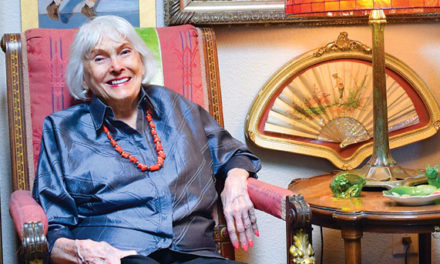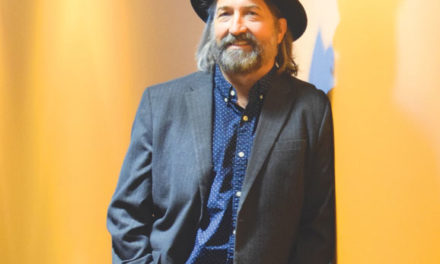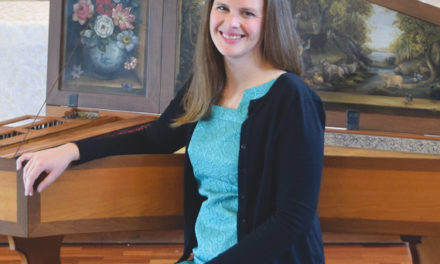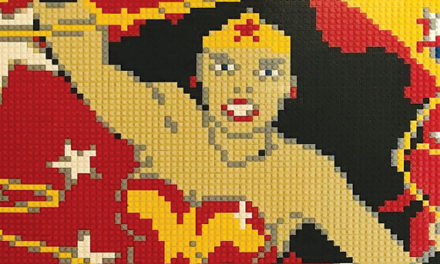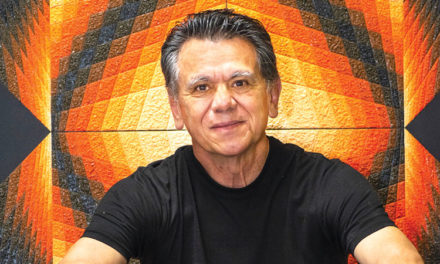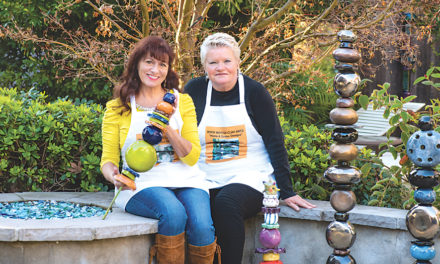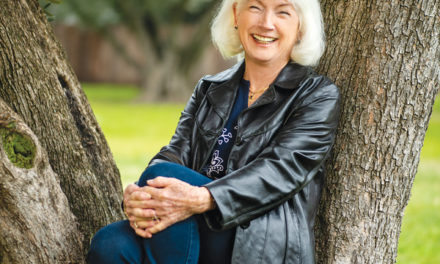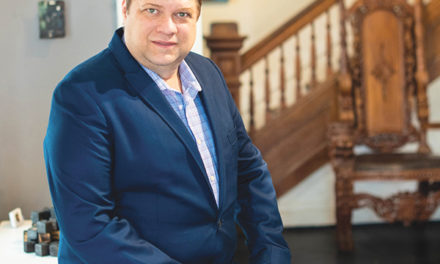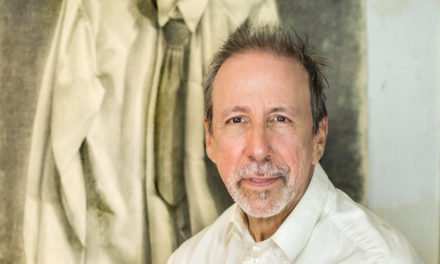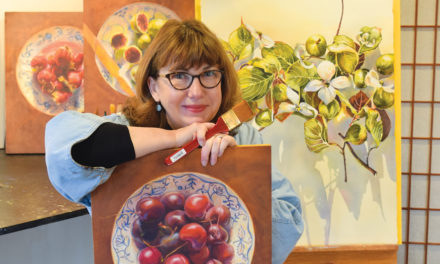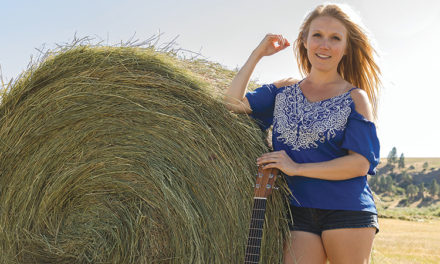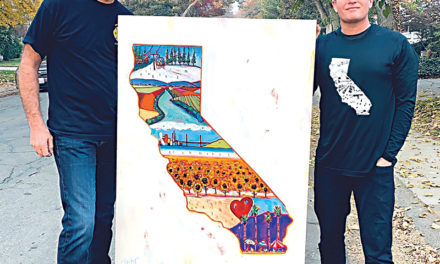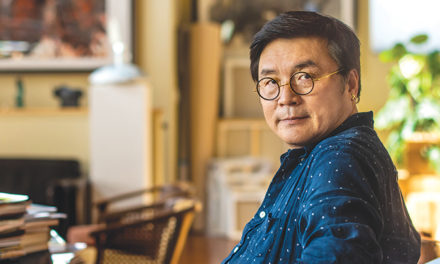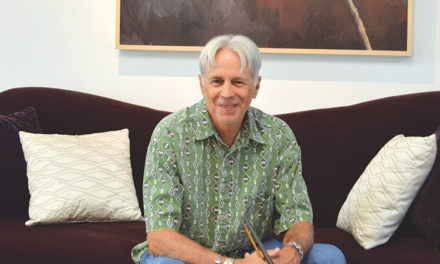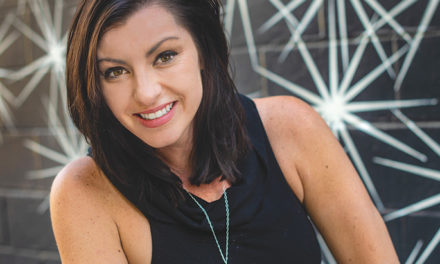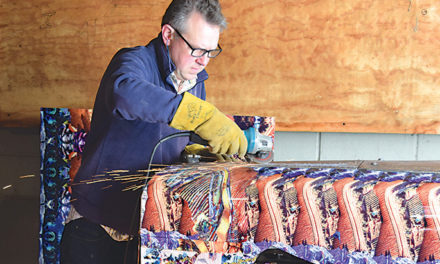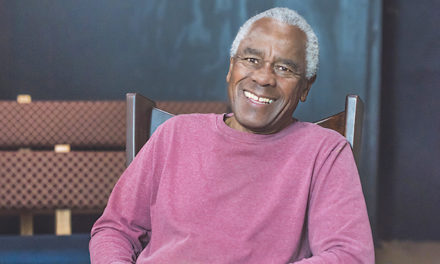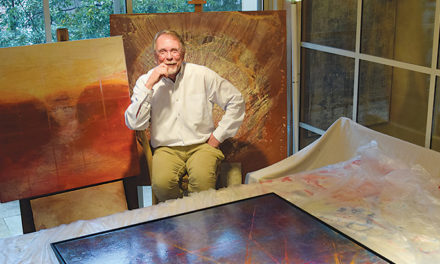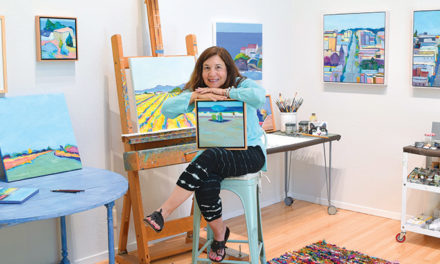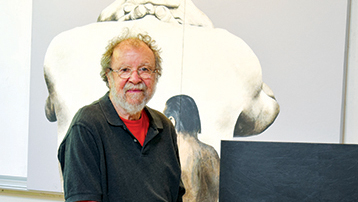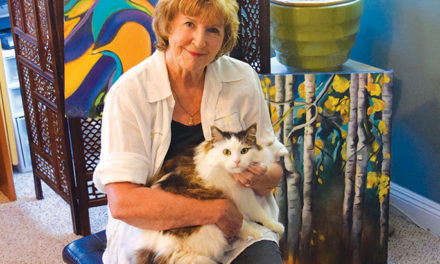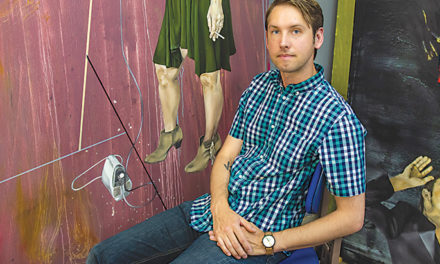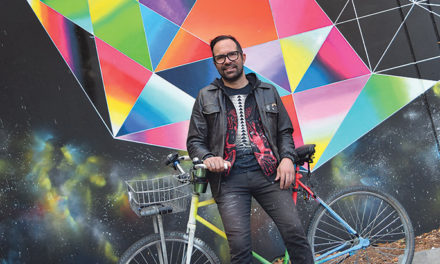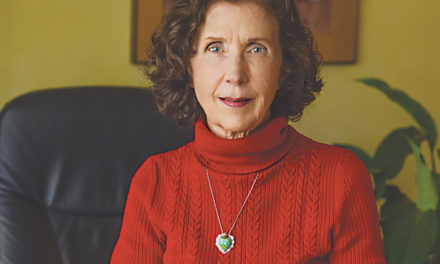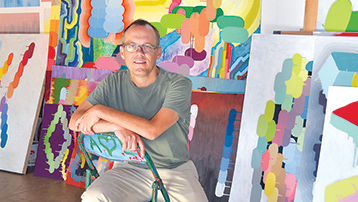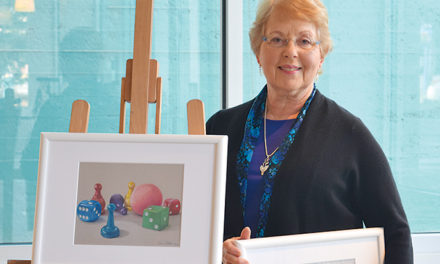Ancient Meets Modern
Chinese-Born Master Bridges East and West With His Art
By Daniel Barnes
January 2019
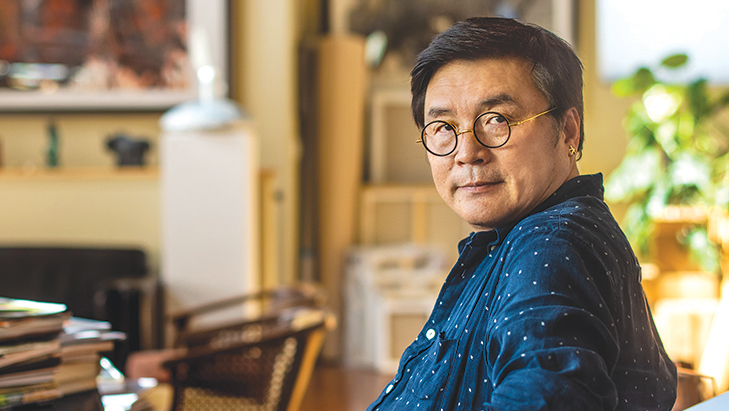
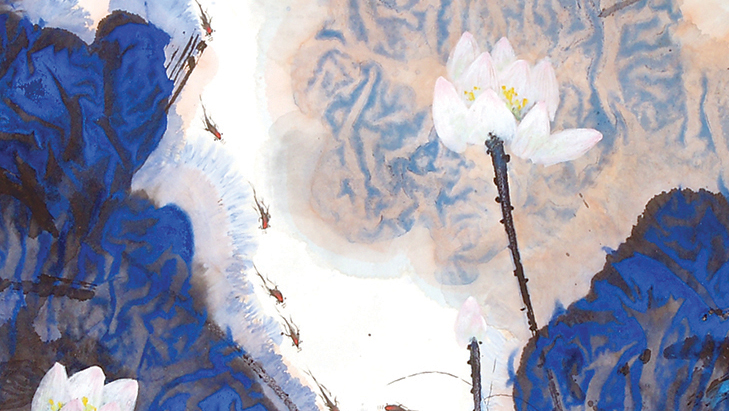
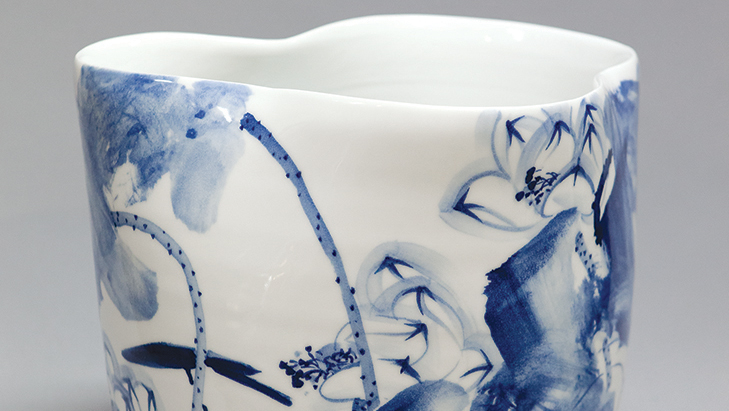
If you know where to look, you start to see Shimo everywhere. A Chinese-born, Sacramento-based “Eastern Neo-Expressionism” master, Shimo has created works that range from passionately colorful oil paintings to intricately beautiful porcelains. They can be found on display at the Sacramento Convention Center, Crocker Art Museum and his own Shimo Center for the Arts in Midtown.
Shimo is practically a household name in China, where he recently helped set up a show for his good friend Gregory Kondos, but the path to international success was never easy. Like the lotus flowers that figure prominently in his work, Shimo emerged in a dark place, only to become a symbol of beauty.
He was born in Shanghai, China, in 1962, just a few years before the outbreak of the Cultural Revolution in 1966. For the next decade, the Maoist government forcefully purged capitalist elements from Chinese society, and, as art became a propaganda tool, nonconforming artists were persecuted. Shimo’s family was considered wealthy, so their home and assets were seized, leaving the child in a precarious situation.
“During that period for Chinese, we consider it a very dark period, because the government controlled all the things,” says Shimo’s wife Winly Chen, who helped translate during our interview (Shimo speaks very limited English). Too young to be targeted as a subversive, Shimo initially turned to art as a means of survival. At the age of 5, Shimo was told, “If you want to survive, you need to be artist, learn to do artwork,” says Chen. From there on, Shimo would visit a park every day to work on his sketches.
Shimo fell in love with art, building a foundation in classic Chinese water and ink painting before applying to art school, where he learned oil painting and accrued influences from the West. “That’s the reason why from his painting you can feel a little Western and Eastern,” says Chen.
An exhibition at the Beijing Embassy catapulted Shimo to prominence. He was eventually encouraged by the Chinese government to apply for a visa to live in America and promote his art. Once settled in Sacramento, Shimo realized to his delight that the city was home to beloved artists like Kondos and Wayne Thiebaud, and the city’s slower pace allowed him to focus on his work. “Sacramento is a very quiet city,” says Chen. “Shanghai, it is an international city, very crowded. … Sacramento very calm.”
The bridge between ancient Eastern technique and contemporary Western abstraction lies at the heart of Shimo’s work, and he even has favorite flowers for each hemisphere. In China, he focused on the lotus.
“The lotus in China is a symbol of the sanctity of the people,” says Shimo through a translator app on his phone. But America inspires him to paint the calla lily. His flower paintings blend these influences like separate streams of water, as flowing lines and bold colors meld in perfect harmony.
But perhaps nothing captures Shimo’s East-meets-West, ancient-meets-modern aesthetic better than his porcelains, which garnered him a solo show at the Crocker in 2015. Shimo worked tirelessly to master the high-quality clay found in Jingdezhen, the “porcelain capital” of China since the 14th century, and he destroyed every piece that didn’t come out perfect. “He doesn’t want to have any defect, which means any bubble or something like that,” says Chen. “He doesn’t want people to see any mistake.”
The surviving porcelains are indeed perfect, blemish-free and so thin that they are practically translucent, with a modernist shape that belies the ancient technique. After finishing the porcelain in the kiln, Shimo draws on the outside using blue cobalt oxide, another ancient technique that he subverts with the abstract shapes of his flowers, birds, landscapes and figures.
Married since 1991, Shimo and Chen started the Shimo Center for the Arts on the ground floor of their Midtown home in 2012 to promote local artists. “My gallery is dedicated to providing an exchange platform for professional artists in our city,” says Shimo through the translator app. The couple used to hold a show every month or two, but they have scaled back in recent years as Shimo currently splits his time between creating art in Sacramento and teaching art at Shanghai University in China.
Although he has lived in the United States since 2003, he still gets a much different reception in China. “The Chinese people know his name much better than here, for American people still need to learn about him,” says Chen. “But in China, once you say his name, people know about that.” To that end, Shimo plans to continue improving his art, from the oil paintings to the porcelains to the water and ink work.
“I will create a series of works that show the American spirit,” says Shimo.
Daniel Barnes can be reached at danielebarnes@hotmail.com.



